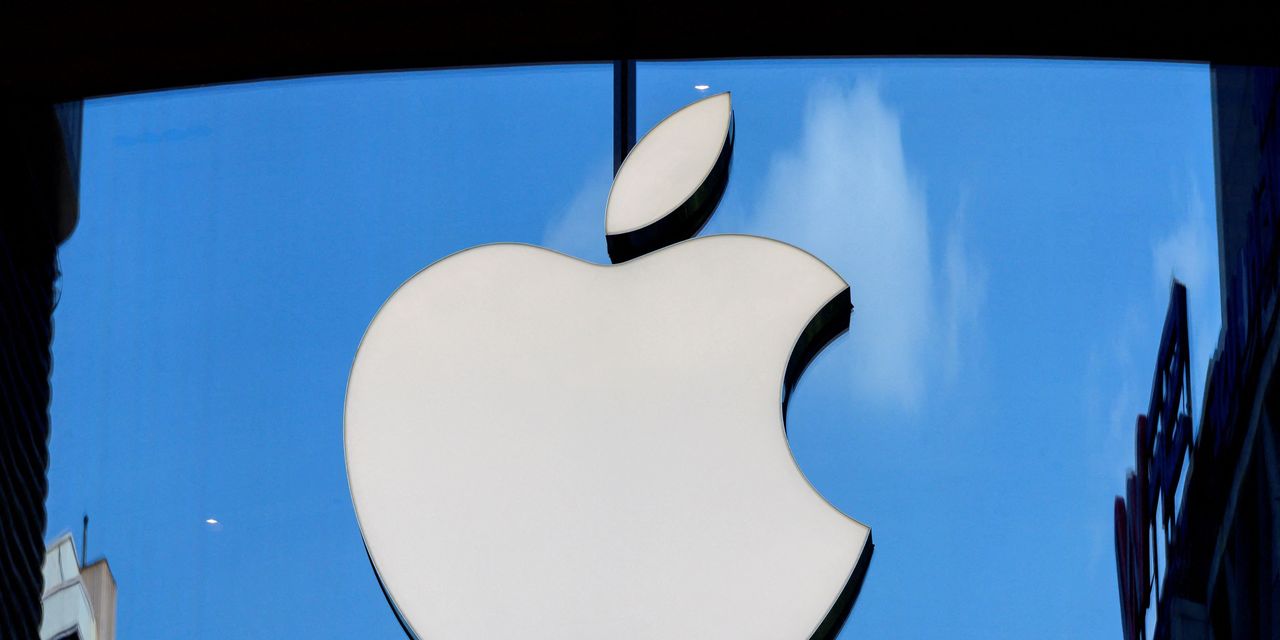U.S. stocks surged on Wednesday after the Bank of England announced a plan to intervene in the U.K. government debt markets to suppress intense volatility seeping into global bonds, equities and currencies.
The sharp bout of volatility pushed U.K. sovereign bond yields higher, while the pound
GBPUSD,
plummeted in recent days, sparking concerns of an broader economic crisis.
As U.S. stock and bond markets rebounded sharply Wednesday, with the S&P 500 posting its largest percentage point gain in more than a month and the Dow Jones Industrial Average
DJIA,
recording its biggest gain since July, many on Wall Street noticed something unusual.
One of the most important pillars of the U.S. stock market was conspicuously absent from the bounce: Apple Inc.
Wednesday marked the first time since April 17, 2020 that the S&P 500
SPX,
gained roughly 2% or more in a single session without Apple
AAPL,
also trading in the green, according to Dow Jones Market Data.
What’s more, the session was only the second time since Apple entered the Dow in March 2015 that it was the only decliner on the blue-chip average. The last time it was the sole negative Dow stock was Dec. 22, 2015.
The consumer tech giant shaved more than 12 points off the value of the Dow on Wednesday, per Dow Jones Market Data.
With a market capitalization of more than $2.4 trillion, Apple is the largest publicly traded company in the U.S., according to FactSet. In January, it became the first U.S. stock to see its market capitalization top $3 trillion. During the post-global financial crisis period, Apple was perennially one of the best-performing stocks in the U.S.
While the S&P 500 gained 2% on Wednesday and the Dow gained 1.9%, the Nasdaq Composite
COMP,
gained 2.1%, according to FactSet. Apple, by comparison, lost 1.3% to close at $149.84. The S&P 500 has fallen nearly 22% so far this year, compared with a year-to-date loss of 15.6% for Apple.
Sven Henrich, the founder of Northman Trader, illustrated Apple’s absence in a tweet.
Apple slumped on Wednesday after reports that the company had reversed a previous plan to boost iPhone 14 production in the second half of 2022, which includes the all-important holiday sales period. However, analysts who spoke with MarketWatch said the cuts could pay off as Apple shifts more production toward the more expensive iPhone 14 pro model, and away from the base model.
See: Apple’s rumored production cutback ‘overshadows the underlying story’ of strong iPhone 14 Pro demand
Wedbush Securities analyst Daniel Ives, a longtime Apple bull who maintains an outperform rating on the stock, suggested that investors might see Wednesday’s downdraft as an opportunity to scoop up shares of the consumer-tech giant on the cheap, in an interview with CNBC’s “The Closing Bell.”
“The base [model] no doubt has been underwhelming, but the Street is starting to understand the message. It’s all about the pro,” Ives said.
However, CNBC host and Ritholtz Wealth Management Chief Executive Officer Josh Brown pointed out that technical factors seem to suggest more pain ahead for Apple, since its shares are on the verge of what traders call a “death cross” — when the 50-day moving average of a given stock, currency or asset moves below the 200-day moving average.
Apple’s 50-day moving average stood at 160.29 after markets closed on Wednesday, just above its 200-day moving average of 160.21.
Apple didn’t immediately respond to a request for comment from MarketWatch.
—Emily Bary contributed reporting to this article
